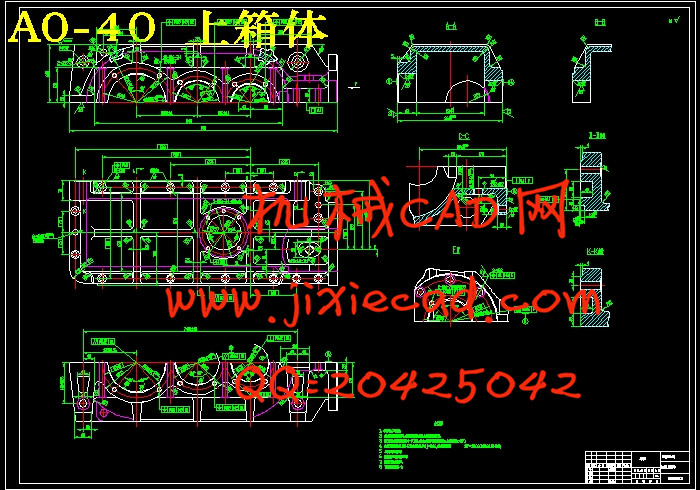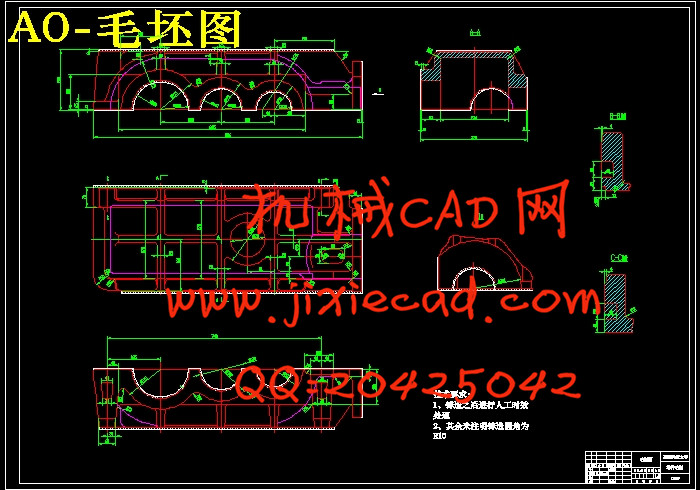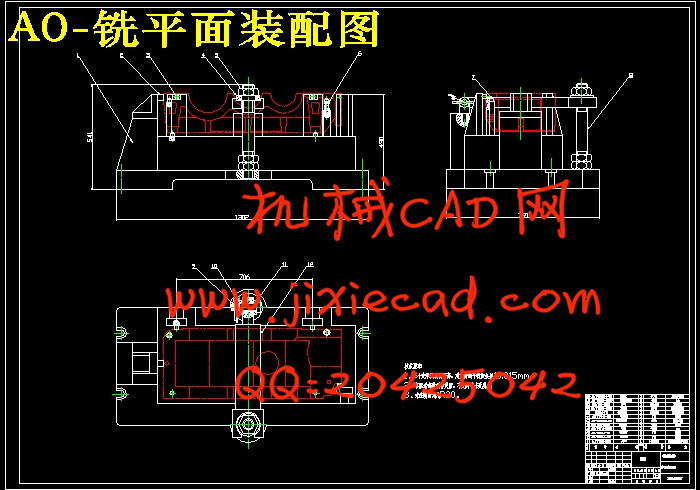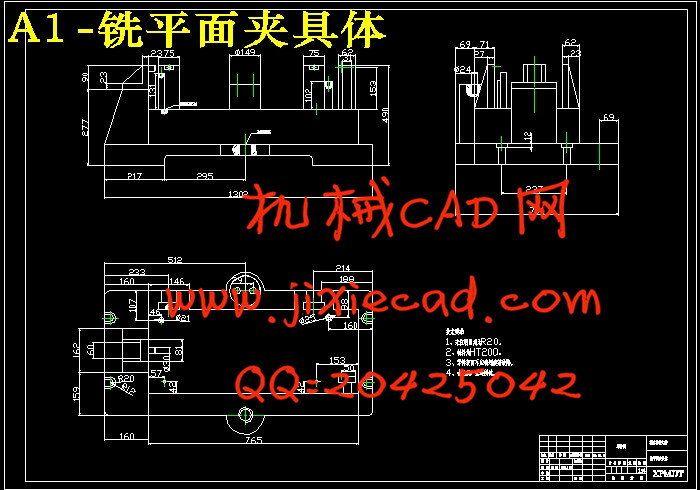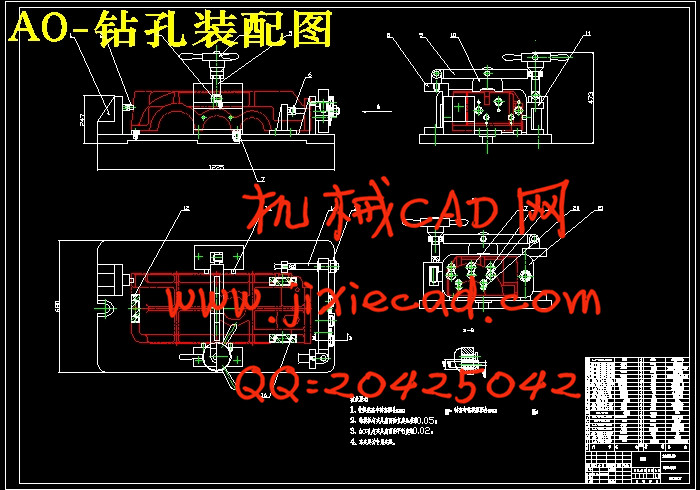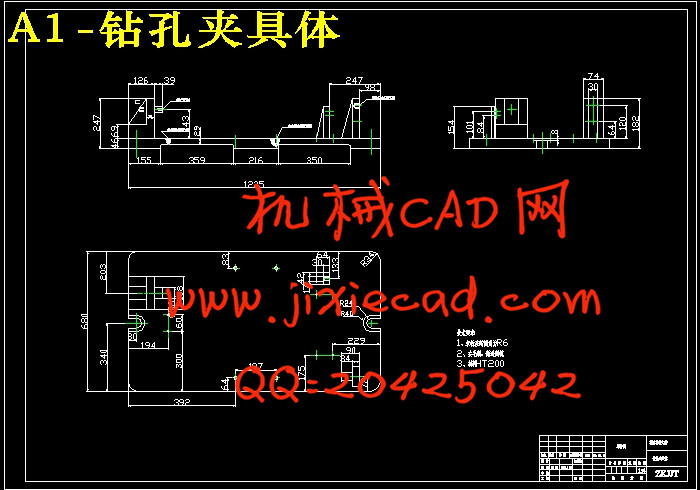设计简介
摘 要
夹具一直以来在制造业中被广泛应用,用于在机械制造过程中固定加工对象,使之占有正确的位置,以接受施工或检测的装置,是十分重要的工艺装备之一。夹具的质量、工作效率,及夹具使用的可靠性,都对产品的加工质量及生产效率有着决定性的影响。
变速箱盖的加工主要是加工表面、轴孔和各表面其他孔。此次设计包含变速箱盖从铸造到加工成型的整个工艺规程,涉及到加工顺序、表面粗糙度等问题,并且设计了铣平面和侧面钻孔两个工位的夹具。
关键词:表面粗糙度;变速箱盖;工艺规程;夹具;
夹具一直以来在制造业中被广泛应用,用于在机械制造过程中固定加工对象,使之占有正确的位置,以接受施工或检测的装置,是十分重要的工艺装备之一。夹具的质量、工作效率,及夹具使用的可靠性,都对产品的加工质量及生产效率有着决定性的影响。
变速箱盖的加工主要是加工表面、轴孔和各表面其他孔。此次设计包含变速箱盖从铸造到加工成型的整个工艺规程,涉及到加工顺序、表面粗糙度等问题,并且设计了铣平面和侧面钻孔两个工位的夹具。
关键词:表面粗糙度;变速箱盖;工艺规程;夹具;
ABSTRACT
Fixture has been widely used in the manufacturing industry, for the fixed processing object in mechanical manufacturing process. To occupy the correct position and accept the construction or testing equipment. Fixture is one of the very important process equipment. Fixture quality, working efficiency, reliability of the fixture, and the reliability of the fixture using have a decisive impact on the quality and production efficiency of the product.
Processing gearbox cover is the main processing surface, the surface of shaft hole and other holes. The design contains the whole technological procedure of the gearbox cover from the casting to the molding process. It related to the processing sequence, the surface roughness and other issues. And design the milling plane and the side of the drill two station fixture.
Keywords: surface roughness; gearbox cover; technological procedure; fixture;
目 录
Fixture has been widely used in the manufacturing industry, for the fixed processing object in mechanical manufacturing process. To occupy the correct position and accept the construction or testing equipment. Fixture is one of the very important process equipment. Fixture quality, working efficiency, reliability of the fixture, and the reliability of the fixture using have a decisive impact on the quality and production efficiency of the product.
Processing gearbox cover is the main processing surface, the surface of shaft hole and other holes. The design contains the whole technological procedure of the gearbox cover from the casting to the molding process. It related to the processing sequence, the surface roughness and other issues. And design the milling plane and the side of the drill two station fixture.
Keywords: surface roughness; gearbox cover; technological procedure; fixture;
目 录
第一章 前 言 - 1 -
第二章 零件的分析 - 2 -
2.1 零件的作用 - 2 -
2.2 零件的工艺分析 - 2 -
2.2.1 平面加工 - 3 -
2.2.2 孔的加工 - 3 -
第三章 拟定上盖加工工艺路线 - 4 -
3.1确定毛坯的制造形式 - 4 -
3.2 基准的选择 - 4 -
3.2.1粗基准的选择 - 5 -
3.2.2 精基准的选择 - 5 -
3.3 制定工艺路线 - 5 -
3.3.1 主要表面与次要表面的加工顺序安排原则 - 6 -
3.3.2 热处理工序的安排 - 6 -
3.3.3 辅助工序的安排 - 6 -
3.3.4 检验工序的安排 - 6 -
3.3.5 工艺路线的拟定 - 7 -
第四章 加工余量确定及工序尺寸计算 - 11 -
4.1 毛坯余量 - 11 -
4.1.1公差等级的确定 - 11 -
4.1.2 确定机械加工余量 - 11 -
4.1.3 确定毛坯尺寸 - 11 -
4.2 箱体各平面加工工序余量 - 12 -
4.3组装孔14-φ18加工工序余量 - 12 -
4.4各通孔的加工工序余量 - 12 -
4.5切削用量及机械加工时间的计算 - 12 -
4.5.1粗铣底面及精铣底面 - 12 -
4.5.2粗铣前后面及半精铣前后面 - 13 -
4.5.3 粗铣右端面及半精铣右端面 - 15 -
4.5.4粗镗、半精镗、精镗轴孔 - 16 -
4.5.5钻凸台面14个通孔 - 19 -
第五章 铣箱体结合面夹具的设计 - 21 -
5.1夹具设计要求 - 21 -
5.2确立方案 - 22 -
5.3机床选择 - 22 -第二章 零件的分析 - 2 -
2.1 零件的作用 - 2 -
2.2 零件的工艺分析 - 2 -
2.2.1 平面加工 - 3 -
2.2.2 孔的加工 - 3 -
第三章 拟定上盖加工工艺路线 - 4 -
3.1确定毛坯的制造形式 - 4 -
3.2 基准的选择 - 4 -
3.2.1粗基准的选择 - 5 -
3.2.2 精基准的选择 - 5 -
3.3 制定工艺路线 - 5 -
3.3.1 主要表面与次要表面的加工顺序安排原则 - 6 -
3.3.2 热处理工序的安排 - 6 -
3.3.3 辅助工序的安排 - 6 -
3.3.4 检验工序的安排 - 6 -
3.3.5 工艺路线的拟定 - 7 -
第四章 加工余量确定及工序尺寸计算 - 11 -
4.1 毛坯余量 - 11 -
4.1.1公差等级的确定 - 11 -
4.1.2 确定机械加工余量 - 11 -
4.1.3 确定毛坯尺寸 - 11 -
4.2 箱体各平面加工工序余量 - 12 -
4.3组装孔14-φ18加工工序余量 - 12 -
4.4各通孔的加工工序余量 - 12 -
4.5切削用量及机械加工时间的计算 - 12 -
4.5.1粗铣底面及精铣底面 - 12 -
4.5.2粗铣前后面及半精铣前后面 - 13 -
4.5.3 粗铣右端面及半精铣右端面 - 15 -
4.5.4粗镗、半精镗、精镗轴孔 - 16 -
4.5.5钻凸台面14个通孔 - 19 -
第五章 铣箱体结合面夹具的设计 - 21 -
5.1夹具设计要求 - 21 -
5.2确立方案 - 22 -
5.4刀具选择 - 23 -
5.5切削力的计算 - 23 -
5.6机动时间的计算及工序时间定额的确定 - 23 -
5.7计算夹紧力 - 24 -
第六章 右端面钻孔夹具设计 - 27 -
6.1确定设计方案 - 27 -
6.2计算加紧力 - 28 -
6.3定位误差的分析 - 29 -
6.4操作说明 - 29 -
第七章 结论 - 30 -
参考文献 - 31 -
致谢 - 32 -


